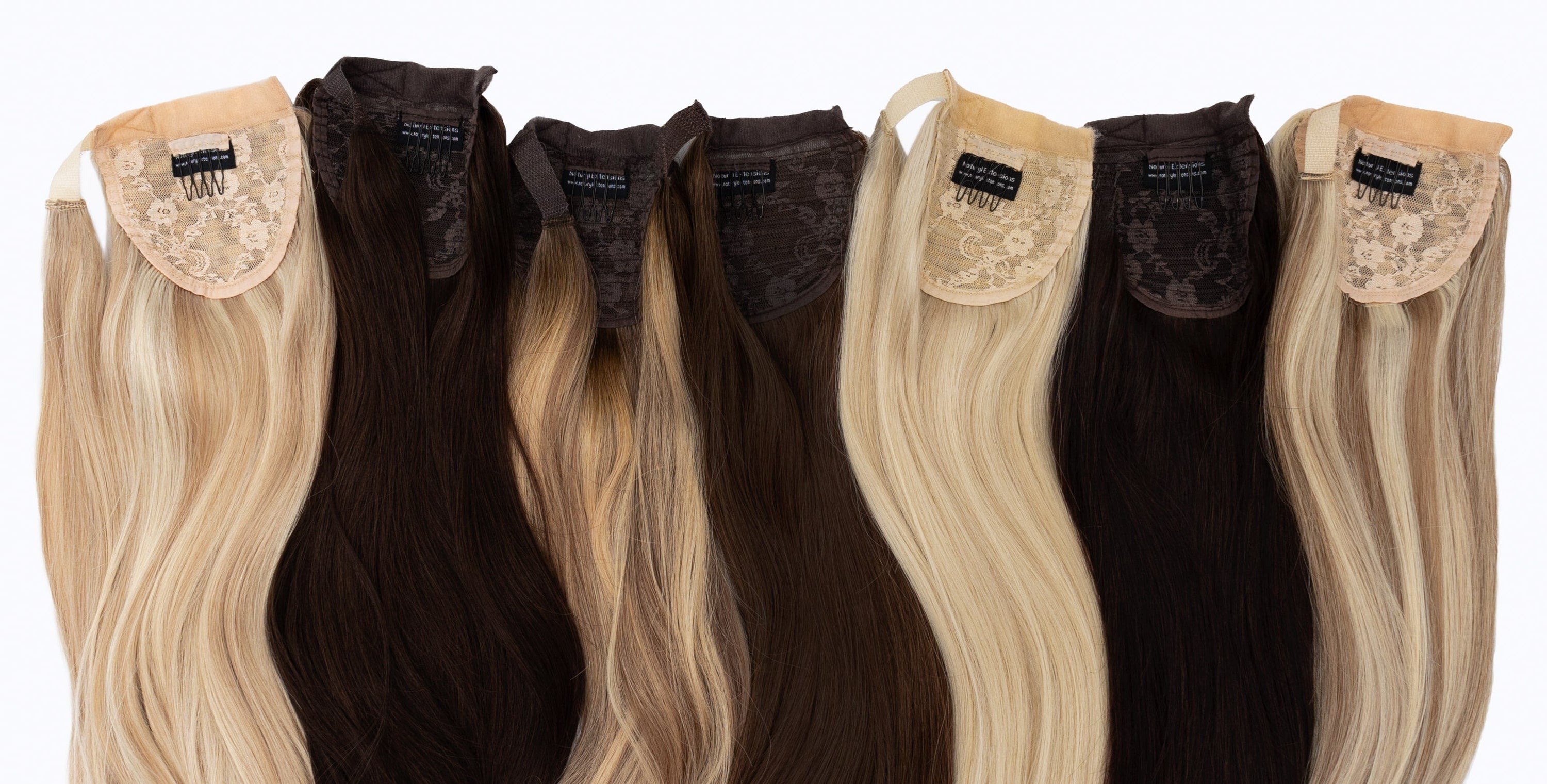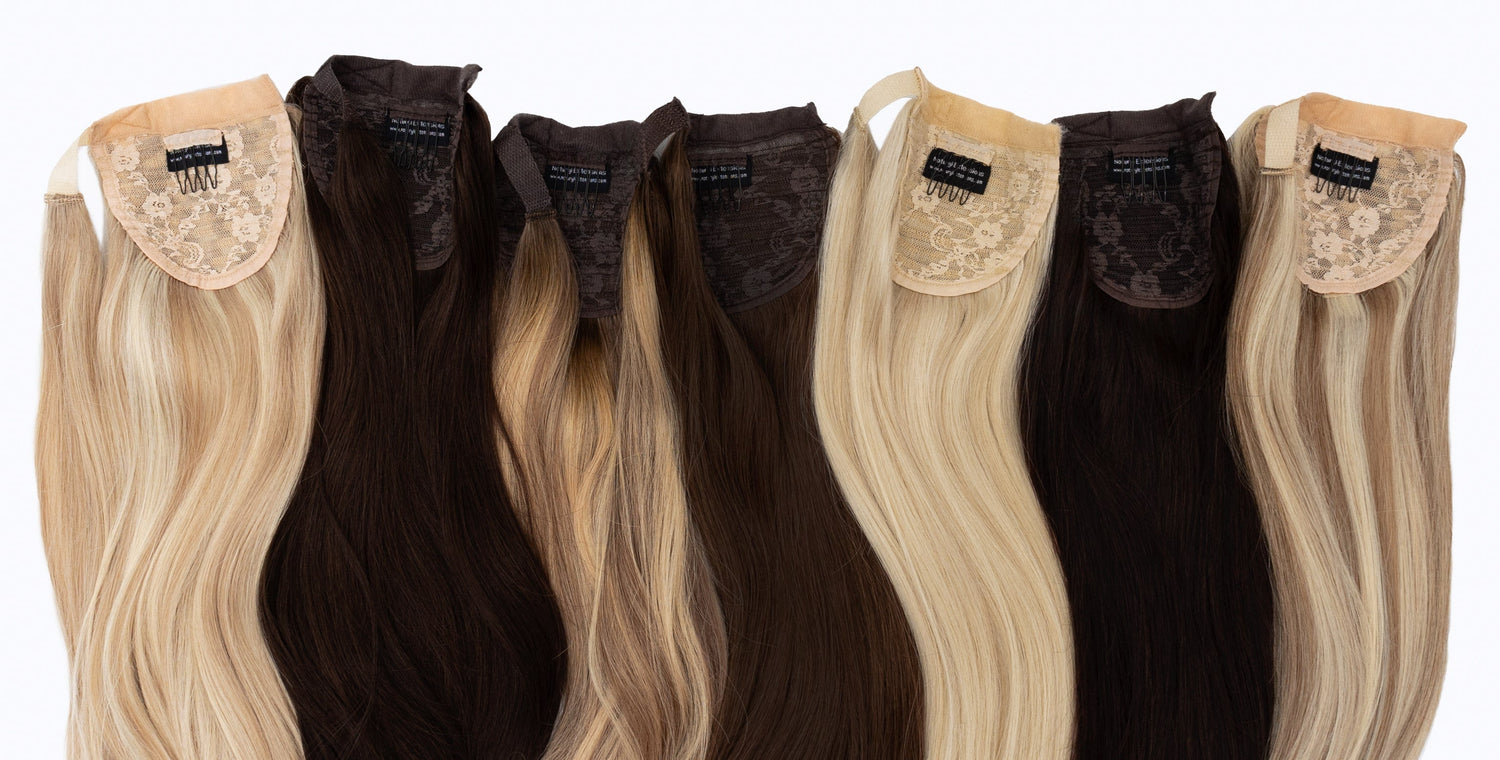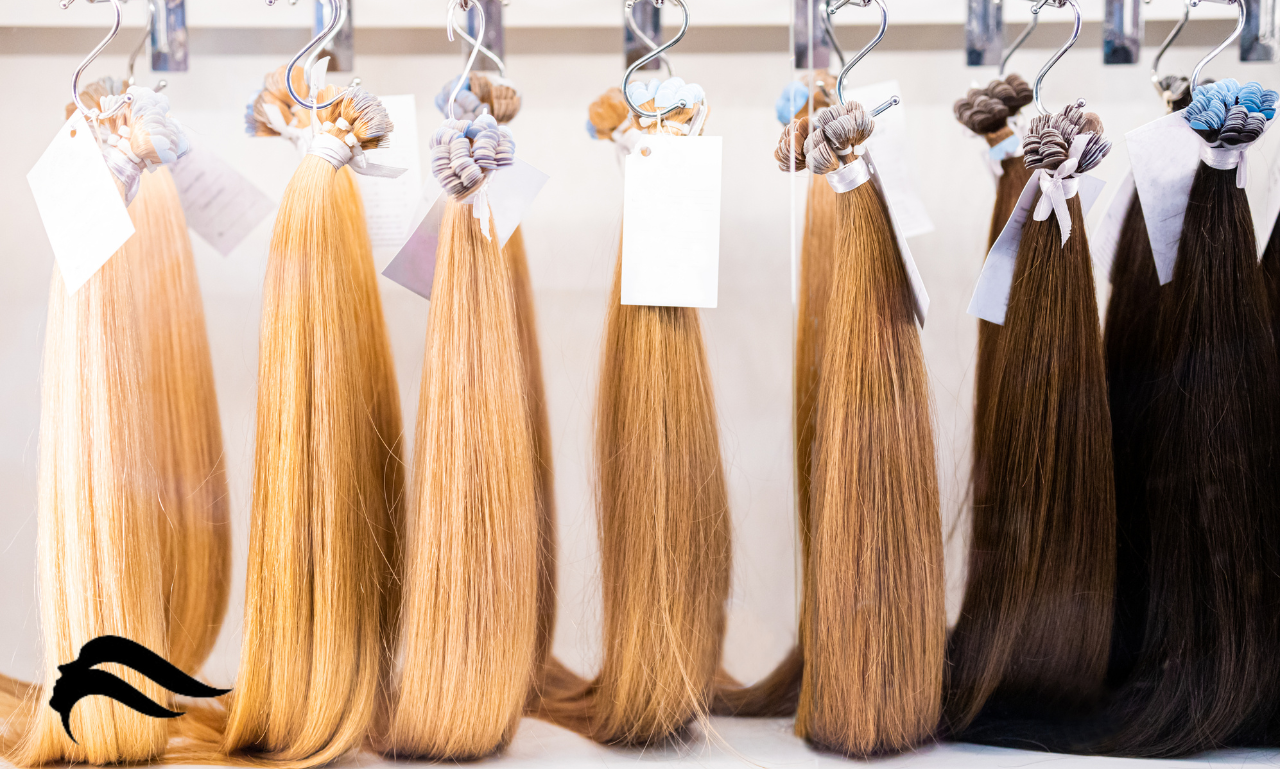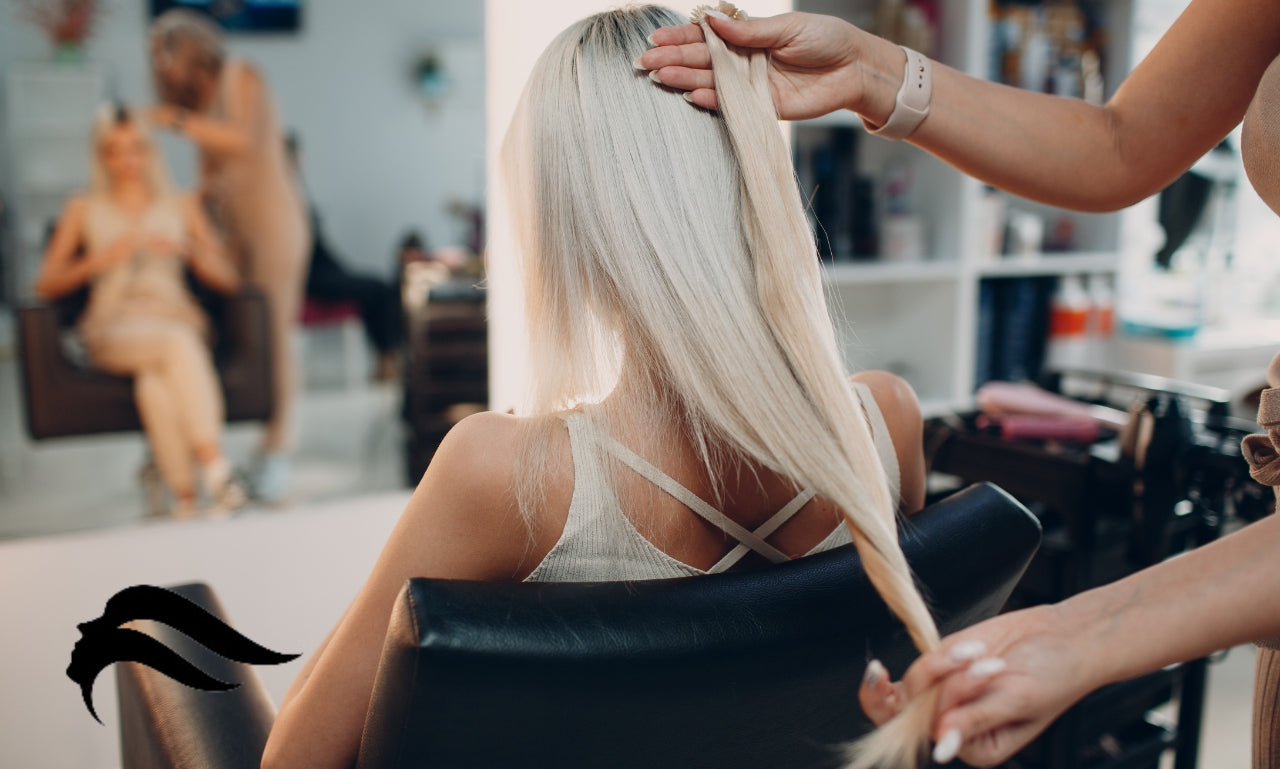If you’ve ever wished your hair would just grow faster or wanted to switch up your look without waiting months for length or volume, hair extensions have probably crossed your mind. But deciding whether to get them can feel like a big step, especially if you’ve never tried them before. Are they worth it? Will they damage your hair? And how do you know which type is right for you?
Let’s break it down in plain language so you can decide if extensions are the right move for you and your hair.
Why people get hair extensions

Most people think of extensions as a shortcut to long hair, and that’s definitely part of the appeal for many. But length isn’t the only reason to get them. Good quality extensions also add volume, thickness, or even a touch of colour without committing to dye.
You might want them because:
-
You’ve got fine or thinning hair and want to add more body.
-
You’ve had a bad haircut and want to disguise it while it grows out.
-
You’re getting ready for a special occasion and want an instant boost.
-
You like the idea of styling versatility, with ponytails, waves or braids, without waiting for your natural hair to catch up.
They’re also popular with people who simply want to enjoy their hair more. It’s not necessarily about covering up what you’ve got; it’s more about enhancing it.
The main types of hair extensions
Before you decide, it’s worth knowing the main types you can buy and fit yourself. Each has its pros and cons depending on how much time and effort you’re happy to put in.
Clip-in extensions
Clip in hair extensions are the easiest and best value option. You clip them in at the roots, style your hair as normal, then remove them at the end of the day.
They’re great if you want instant length or volume without commitment. You can wear them for a night out, then take them off before bed.
They’re also ideal for beginners because you can fit them yourself with no tools, glue or training required.
Tape-in extensions
Tape-ins come in small panels that stick to your hair with a medical-grade adhesive. They lie flat and can look natural when applied properly.
They’re still one of the most popular types because they’re reusable, comfortable and lightweight. While they usually need to be fitted professionally, you can apply and reapply them yourself with care, though it takes patience and precision.
You’ll need to move them up every six to eight weeks as your hair grows, so they’re not a one-off purchase. But for semi-permanent wear that still looks seamless, they’re a solid choice.
Micro ring or micro loop extensions
These come as small strands with a loop and bead that you attach to tiny sections of your natural hair. No glue, no heat, just the beads holding everything in place.
They can last for months, but they do take quite a bit of time to fit and remove. They’re one of the more advanced types to install yourself, so most people prefer something simpler unless they’ve done it before.
If you do try them, you’ll need to section carefully, avoid pulling, and check the beads regularly to make sure they stay secure.
Weft extensions
A weft is a long strip of hair that you can sew, glue or clip onto your natural hair. There are lots of ways to use them, from quick clip-in wefts to sew-in styles.
They’re great for adding lots of volume quickly and can look very natural if colour-matched well. Some people use them for DIY sew-in weaves or to make custom clip-in pieces.
Again, they’re better suited to those who are comfortable working with extensions, but they offer loads of flexibility.
While all types of hair extensions have their place, clip in extensions are the best balance of results and usability for most people.
Synthetic vs human hair
One of the biggest decisions you’ll make is whether to buy synthetic or human hair extensions.
Synthetic extensions
These are made from man-made fibres designed to mimic real hair. They’re cheaper and come pre-styled, which makes them good for occasional use or trying out a new look.
The downside is that you can’t use heat tools on most of them, and they tend to have a shorter lifespan. They can also be quite shiny, which makes them stand out against natural hair.
Synthetic extensions are fine if you’re after something quick and affordable for short-term wear, but they won’t behave like real hair.
Human hair extensions
These are made from genuine human hair, which means they look and feel completely natural. You can wash, style, curl and straighten them just like your own.
They last much longer and blend more seamlessly, especially when you colour match carefully. Remy hair, where all the cuticles face the same direction, is the highest quality type of hair extension available as it resists tangling and stays smooth for longer.
They’re more expensive upfront, but if you wear extensions regularly, they’re worth the investment.
At Naturyl Extensions, we exclusively use Remy human hair extensions for the incredible results and colour matching they provide.
Do hair extensions damage your hair?
This is the question everyone asks, and the honest answer is that they can, but only if used incorrectly.
Damage usually happens when:
-
Extensions are too heavy for your hair type.
-
You leave them in for too long without maintenance.
-
You don’t brush or wash them properly.
If you fit them gently, and take care of your natural hair underneath, there’s no reason they should cause damage.
It’s worth giving your scalp a break now and then, especially if you wear extensions daily. A few days without them lets your roots relax and helps prevent tension or breakage.
Caring for your extensions
Good aftercare makes all the difference. Even the best-quality hair will tangle or dry out if it’s not looked after.
A few simple habits go a long way:
-
Brush gently: Use a soft bristle or loop brush, starting from the ends and working up.
-
Wash carefully: Use sulphate-free shampoo and conditioner, and don’t rub aggressively.
-
Dry properly: Pat with a towel, then air dry or blow-dry on a cool setting.
-
Style with care: Always use heat protection and avoid excessive heat.
-
Store properly: Keep clip-ins in a storage bag or box when not in use.
If you treat your extensions like your own hair, they’ll last much longer, sometimes several months for cheaper sets or even years for Naturyl Remy Human Hair.
Colour matching and blending
The secret to natural-looking extensions is the colour match. Even a small mismatch can make them noticeable.
Most brands offer detailed shade charts and photos in natural light, which helps you pick a close match. Some even sell colour rings you can hold up to your hair before ordering.
When in doubt, go slightly lighter rather than darker, as it’s easier to blend with highlights or lowlights. Using a mix of tones also helps mimic the natural variation in real hair and makes them look more believable.
Blending is just as important as colour. Curling or waving your hair and the extensions together usually makes them merge seamlessly.
How to tell if extensions are right for you
Extensions aren’t just for people chasing long, glamorous hair. They’re for anyone who wants a little extra boost, whether that’s volume, fullness or confidence.
They might be right for you if:
-
You enjoy experimenting with your style.
-
You’re comfortable spending time maintaining your hair.
-
You understand that “low effort” doesn’t mean “no effort.”
-
You want flexibility, being able to wear them when you like, not every day.
If you’re someone who rarely styles your hair or doesn’t like maintenance, you might find permanent methods a bit of a hassle. In that case, clip-ins are perfect because they give you control without commitment.
A quick reality check
It’s easy to fall in love with the idea of long, thick hair, but extensions aren’t a magic fix. They take care, attention and patience.
They’ll add instant glamour and confidence, but they’re not something to throw in and forget about. They need gentle brushing, regular washing and careful storage. And like anything you add to your natural hair, they’ll look best when they’re clean, healthy and styled with intention.
If you go in with realistic expectations, knowing they’re a beauty enhancement rather than a shortcut to perfect hair, you’ll enjoy them much more.
So, since we’ve covered all the key factors, back to the key question: should you get hair extensions?
If you love the idea of fuller, longer hair and you’re happy to look after them, absolutely. They can completely change how your hair looks and feels, giving you that fresh confidence boost that comes with a good hair day every day.
The key is choosing the right type for your lifestyle, matching them properly, and taking the time to care for them. Whether you go for quick clip-ins or invest in premium Remy hair, extensions can be a fun and transformative part of your routine.
The best way to decide is simple: think about what you want from your hair, how much effort you’re happy to put in, and how often you’ll wear them. Once you know that, it’s much easier to pick the right kind and enjoy them to the fullest.
To learn more, choose your favourite style from the links below:





